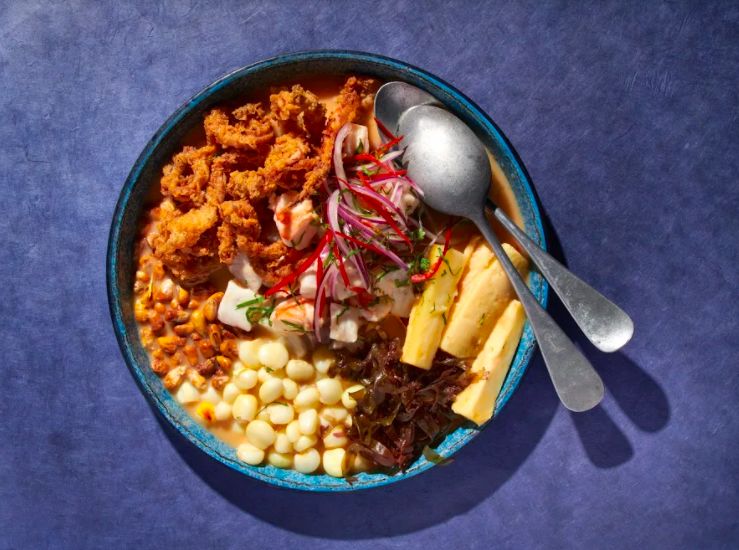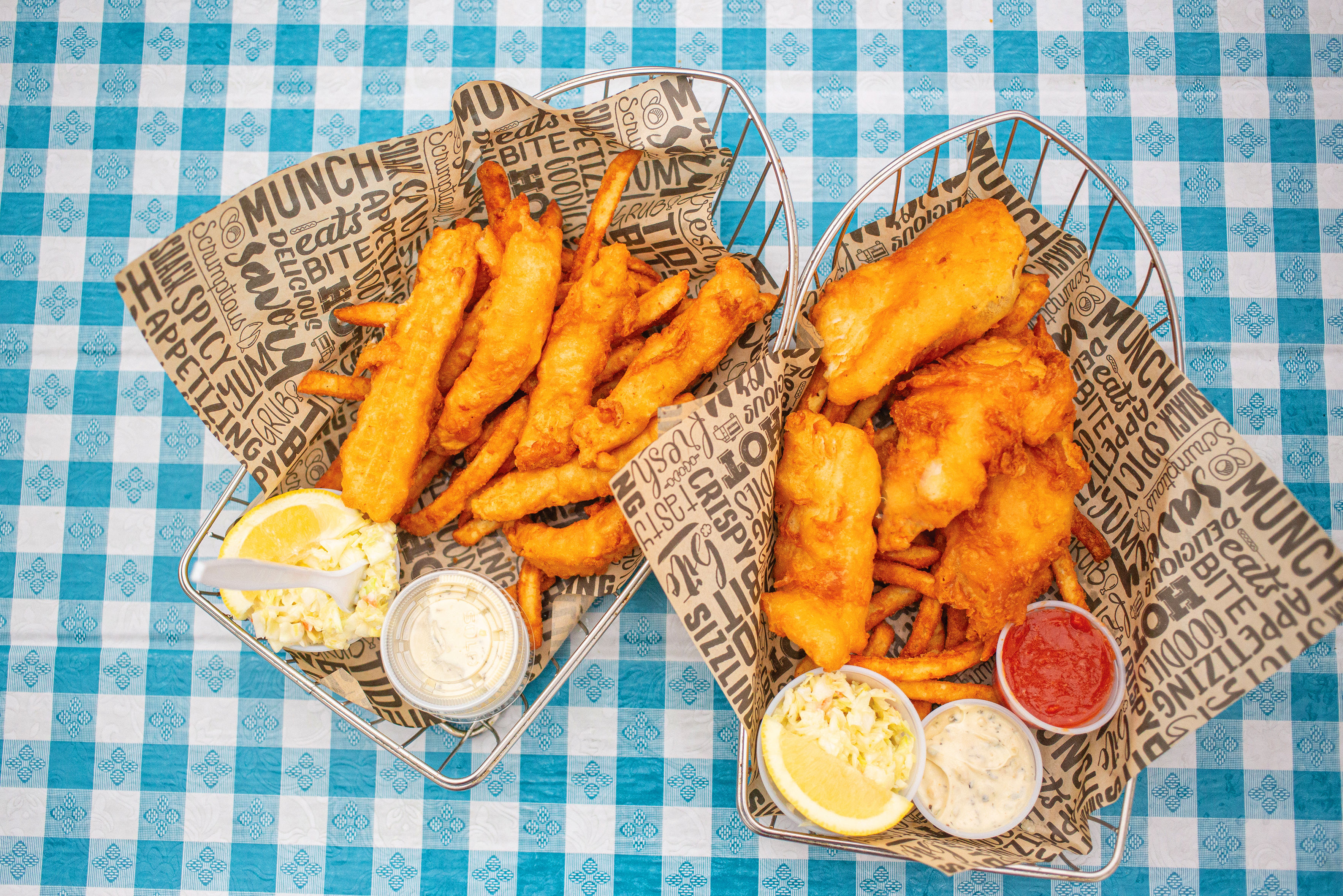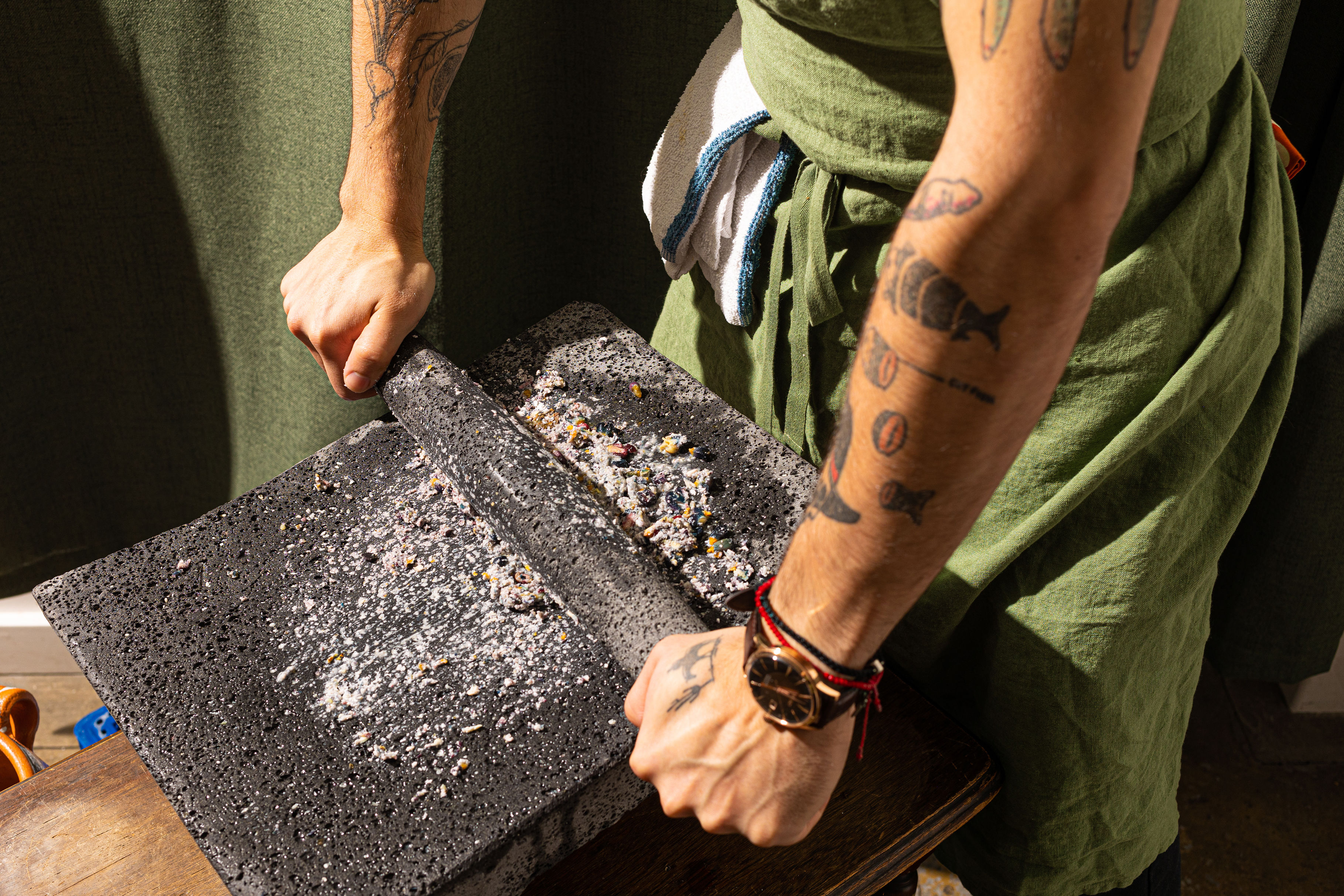Make Andina Chef Alexander Diestra's Cebiche Carretillero

Chicha's cebiche carretillero.
Image: Courtesy Dina Avila
Andina, Portland’s most famous Peruvian restaurant since it opened in 2003, has been through quite the series of changes in the past year. Some were unfortunate pandemic realities, like a promise to reinvent in the fall that was immediately followed by a hibernation that lasted through the winter. Others were exciting and fresh, like the hiring of executive chef Alexander Diestra and the launch of a new takeout concept, Chicha, in May.
Diestra boasts 15 years of experience cooking in Portland kitchens including Saucebox and Clarklewis, but for the Peruvian-born chef, his entrance at Andina means his first time cooking Peruvian food professionally. For Andina, it’s also the first time in several years the restaurant has had a Peruvian chef helming the kitchen. While Chicha continues to offer patio dining and takeout, Diestra and the team are also gearing up to reopen Andina, with a targeted date of late July.
This cebiche recipe is full of memories for Diestra, who grew up with this style of cebiche in Callao, a port city about six miles from Lima. (The difference between Callao cebiche and Lima’s version, according to Diestra, is that Callao’s cebiche uses evaporated milk).
“Back in Peru, me and my friends used to go to the markets, and they were making this dish from scratch,” Diestra says. “They’d get their seafood at 5:30 a.m., and then we’d go there at 7 a.m. just to get their cebiche.”
Pro tip: you can find Peruvian ingredients at stores including Tienda y Carniceria Palacios (6110 SW Lombard Ave, Beaverton) and Kaah Market (7238 SE Foster Rd). You can also find dried seaweed at Asian grocery stores like H Mart.
Cebiche Carretillero
By Chef Alexander Diestra
Serves 4
Cebiche
- 4 oz fish (black sea bass, ono, rockfish, or salmon work well)
- 2 oz cooked medium shrimp*
- 2 oz fried calamari**
- 3 round slices yellow or orange sweet potato, cooked***
- ¼ cup seaweed salad (dried or fresh; Diestra uses a blend of mainly wakame. If dried, allow to soak in water for 10 minutes before using)
- 1 tbsp red jalapeño, julienned
- 1 tbsp red onion, julienned
- ¼ choclo serrano, cooked (or substitute cooked corn kernels)****
- 2 tbsp cancha serrana (omit if unavailable)
- ¼ tsp salt
- 1/4 tsp ground black pepper
*Shrimp: Simmer for 5 minutes in salted water seasoned with salt, half a lemon, and two cloves of garlic. Dunk into ice cold water when done to stop the cooking process.
**Fried calamari: Soak in buttermilk overnight in the fridge, then dredge in flour seasoned with salt, pepper, and paprika. Fry at 350 degrees for about 40 seconds, or pan-fry until golden brown in neutral oil.
***Sweet potato: Cook sliced potato in salted water on a simmer for about 3 minutes.
****Choclo serrano: cook with water and sugar according to package directions; simmer 20-30 minutes.
Salsa Criolla
- ⅓ cup shallot, julienned
- 1 tbsp red jalapeño, julienned
- 1 tsp cilantro, finely chopped
- 2 tbsp freshly squeezed lime juice
- Salt and pepper, to taste
Leche de Tigre (Tiger’s Milk)
- ¼ tsp fresh ginger, peeled
- ¼ clove garlic, peeled
- ½ tsp shallots, peeled
- ½ tbsp sugar
- 1 tbsp fish stock
- ½ tbsp celery
- 1 tbsp evaporated milk
- 1 tbsp rocoto purée or paste
- ½ cup fresh squeezed lime juice (to avoid bitterness, Diestra says, don’t completely squeeze limes until the last drop, which can be bitter; use a new lime instead)
- Purée all the ingredients in a Vitamix or a blender.
- Pass the liquid through a fine mesh strainer.
Assembly:
Place the fish, shrimp, red onions, jalapeños, salt, and pepper in a mixing bowl. Mix well. Place the leche de tigre in the bowl, stir, and let the fish marinade for 5 minutes. Meanwhile, combine all the salsa criolla ingredients in a separate bowl. Add salsa criolla to cebiche. Garnish with remaining ingredients: fried calamari, seaweed, cancha serrana, and sweet potato. Salud!




